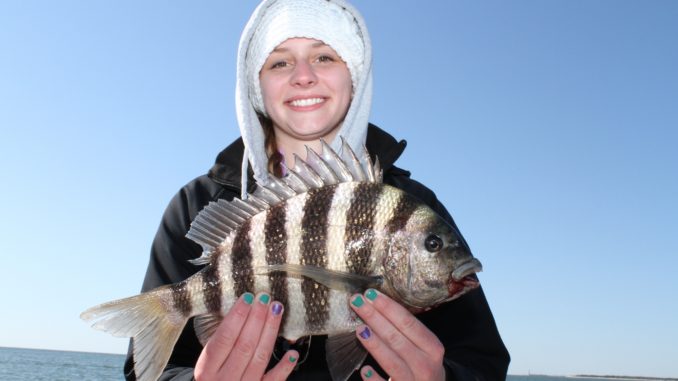
Nearshore reefs and wrecks are January treasures for Hilton Head sheepshead. Here’s how to lock up some tasty ‘convicts.’
January can be a cruel month for anglers, but for those willing to brave the weather, fishing for sheepshead on the reefs and wrecks off the Lowcountry coastline can be phenomenal. While fishermen targeting sheepshead inshore during spring and summer have it easy as far as weather is concerned, those who venture to nearshore reefs and wrecks during the winter have the edge when it comes to catching quality fish.
One way these nearshore convict fish differ from their inshore counterparts is their bite. While inshore, these fish are finicky and nibble cautiously. Fishermen targeting them live by the adage “Set the hook before you feel the bite,” because once you feel the bite, it’s usually too late to set the hook. Around reefs and wrecks, it’s a different game altogether. Sheepshead are in competition with far more species and are less cautious due to the location; when they see an easy meal, they take it more aggressively than they do while inshore. This is not to say they are easy to catch; they are still adept at stealing bait and leaving anglers frustrated, but at least the anglers can feel it happening.
One of the most-important factors in catching these fish is boat position, according to Capt. Rick Percy of Reel Chance Charters in Beaufort.
“If you are dropping your bait in the right spot, you’ll get a bite on every cast, but if you’re the slightest bit off, you won’t have a chance,” he said.
When it comes to positioning, Percy relies on his electronics and a good anchor hold.
“I like to find a big drop off on my depth finder, say one that drops from 15 to 40 feet, and I want to position my boat where I can drop my bait straight down that ledge,” he said. “I will see fish on my electronics and get my bait to that depth. And then you just hold on.”
For bait, Percy (803-535-6166) prefers live shrimp. He uses 20-pound Power Pro braid for his running line, with a 2-foot leader of 30-pound mono. He connects the lines with a barrel swivel and keeps his bait in the strike zone with an egg sinker.
“Sometimes you can use a 3/4-ounce sinker, and sometimes you need one a little heavier, depending on the tidal current,” said Percy, who uses medium to medium-heavy rods with 2500 and 3000 series reels.
When it comes to tide cycles, Percy said sheepshead will bite through them all, but the bite is slightly better when the tide is moving, either coming in or going out. He catches his share of these fish around the Fish America reef and the Gen. Gordon wreck, among others, which are less than five miles off the beaches of Hilton Head Island.
While Percy said the weather is the toughest part of this kind of fishing, it is well worth it when you can catch a pretty day.
“When you catch a good weather day in January, the sheepshead fishing is unbeatable,” he said.
Capt. Charlie Beadon of Hilton Head Fishing Adventures, who also chases these fish around reefs and wrecks, agrees that the fishing can be outstanding.
“The key to the wrecks is in the structure,” said Beadon, who praises the S.C. Department of Natural Resources and other organizations for creating fish-holding structure by sinking everything from subway cars to dismantled bridges. “When you have endless miles of barren sand bottom, there isn’t much to hold fish. The wrecks attract bait fish, which in turn attract larger fish.”
And, said Beadon, while these wrecks hold fish year-round, they are better for sheepshead in the colder months, simply because of numbers. They leave inshore waters when the water cools in the fall, and by January, they are stacked in tight around this kind of structure.
“I’m often asked if it isn’t too cold to fish,” said Beadon, who always replies in the negative. “The best action is during these cold months when these fish move out to deeper water, and I look for calm days to head to these wrecks to catch sheepshead this time of year.”
Beadon uses fairly light tackle when chasing these fish offshore.
“I try to use the lightest tackle possible for fishing,” he said, pointing to light-action spinning rod in the 8- to 17-pound class mated with 2000 to 2500 series reels. This keeps things sporting, allows anglers to feel more bites and is enough to lift these fish out of their watery haunts.
Hooks between No. 3 and 1/0 are common when using either shrimp or fiddler crabs for bait. To keep small fish at bay, some anglers load their hooks with multiple baits. This, some anglers believe, will entice the larger — and usually more cautious — sheepshead into taking a chance when they might otherwise pass on a smaller offering.
Hooks, according to Beadon, need to be plenty sharp.
“Sheepshead have very hard teeth, plus, their inner mouths and throats are lined with hard crushers used to scrape barnacles and crush crabs,” he said. “Considering the armored mouths of these fish, sharp hooks are the key to putting them on the end of the line. Basically, if you run your hook point across your fingernail and it doesn’t easily catch, the hook is not sharp enough.”
Percy and Beadon rely on their electronics to locate the structure. Some anglers take things a step further once they find a good-looking fishing hole, employing a color video camera to make sure that hole is holding fish. The small camera is wired to a color monitor; they drop the camera down, spin it 360 degrees to get a good look at the surroundings and also spy on the fish that are present. If they don’t like what they see, they will reset their position, pulling in or letting out a length of anchor rope and then tying off again. They then check the camera once more and continue checking it until they see concentrations of sheepshead they deem worthy of pursuing.
Setting the hook is a critical part of getting a sheepshead in the boat, but perhaps no other fish is as good at avoiding a hook set than these, especially on wrecks and reefs.
Finicky biters while inshore, sheepshead drop their defenses somewhat off the beach, but one thing that doesn’t change is the construction of their mouths. The size of their teeth along with the thickness and hardness of their mouths makes it difficult for hooks to pierce through, and once the hook does find pay dirt, the fish’s teeth can cut through fishing line like a razor blade.
Some anglers believe in setting the hook hard as soon as they feel a nibble, but others contend that technique will simply pull the hook free more often than not. Morgan Watt, a part-time resident of Lady’s Island, uses a different hook-setting strategy.
“I move my bait slightly up and down, because these fish will often suck the bait into their mouths and just sit there,” he said. “When I pull up slightly — even before I know if I have a bite — if a fish is there, it will usually ease away, attempting to regain control of his position. When I feel that movement, I just lift the rod tip steadily until I feel the fish is hooked. Then I reel quickly to get the fish away from the structure. It goes against the instinct to just rear back and drive that hook home, but I’ve caught more sheepshead since I began using this technique.”
DESTINATION INFORMATION
HOW TO GET THERE/WHEN TO GO — To reach the Hilton Head area from most parts of South Carolina take I-95 south to Exit 28, then take SC 462 and SC 170 onto Fording Island, then take US 278 the rest of the way. If you can reach US 17 more easily, turn south and east on SC 315 to May River Road, Bruin Road and Burnt Church Road to US 278. Weather is a huge consideration, but the potential to catch sheepshead around reefs and wrecks exists from Thanksgiving through February.
HOT SPOTS — Plenty of reefs and wrecks are within easy range of boats leaving Hilton Head and Beaufort. These spots are popular for winter sheepshead.
• Fripp Island Reef: 32 15.421N/80 22.465W, a man-made reef 5.8 miles out of Fripp Inlet on a 140 heading. Includes concrete reef balls and two barges in 30 to 38 feet of water.
• Hunting Island Reef: 32 13.055N/80 20.494W, a man-made reef 8.5 miles out of Fripp Inlet on a 144 heading. Includes a barge, a landing craft and other unidentified structure 30 to 55 feet deep.
• Parris Island Reef: 32 18.865N/80 42.520W is a single 40-foot barge in 15 to 40 feet of water in the Broad River between Parris Island and Daws Island.
• Gen. Gordon Wreck: 32 10.115N/80 33.225W, two miles from Port Royal Sound channel buoy 14. The wreck is in six to 18 feet of water, too shallow for bigger boats at low tide.
• Fish America Reef: 32 08.449N/80 41.439W, five miles from Port Royal Sound channel buoy 9 on a 279 heading. Concrete reef balls in five to nine feet of water.
• Gaskins Bank Wreck: 32 06.010N/80 42.185W, 5.7 miles from Port Royal Sound buoy 5 on a 273 bearing. Lost cargo from a barge — primarily scattered railroad rails in four to 10 feet of water. Caution advised on low tide.
• Betsy Ross Reef: 32 03.427N/80 24.851W, 8.5 miles from buoy 2PR entering Port Royal Sound on a 105 bearing. Includes a 430-foot ship, a 175-foot ship and three bridges in 90 feet of water.
TACKLE/TECHNIQUES — Medium to light spinning outfits spooled with 8- to 17-pound line tied to a Carolina rig featuring a No. 1 to 1/0 hook. Fiddler crabs and shrimp are preferred baits.
GUIDES/FISHING INFO — Capt. Rick Percy, Reel Chance Charters, 803-535-6166, www.reelchancecharters.com; Capt. Charlie Beadon, Hilton Head Fishing Adventures, 843-592-0897, www.hiltonheadfishingadventures.com; Blue Water Bait & Tackle, Hilton Head, 843-671-3060; Hilton Head Boathouse, Hilton Head, 843-681-2628; Southern Drawl Outfitters, Hilton Head, SC. 843-705-6010.
ACCOMMODATIONS — Hilton Garden Inn, 1575 Fording Island Rd, Hilton Head Island, 843-837-8111; Holiday Inn Resort, 1 S. Forest Beach Dr., Hilton Head Island, 843-785-5126; Comfort Inn, 2 Tanglewood Dr., Hilton Head Island, 843-842-6662.
MAPS — Capt. Seagull’s Fishing Charts, 252-288-5918, www.captainseagullcharts.com; Fishing Hot Spots, 800-ALL-MAPS, www.fishinghotspots.com; Capt. Judy’s Charts, 912-897-4921, www.missjudycharters.com.

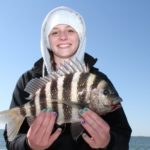
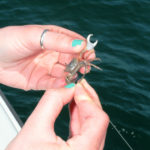
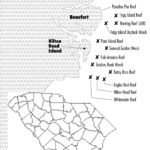
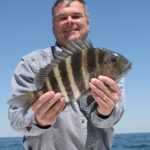




Be the first to comment